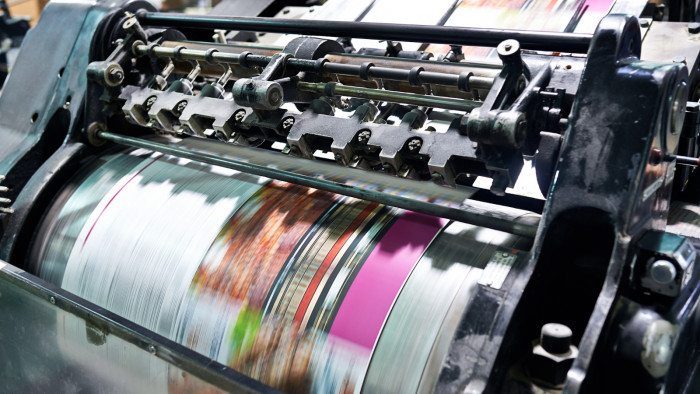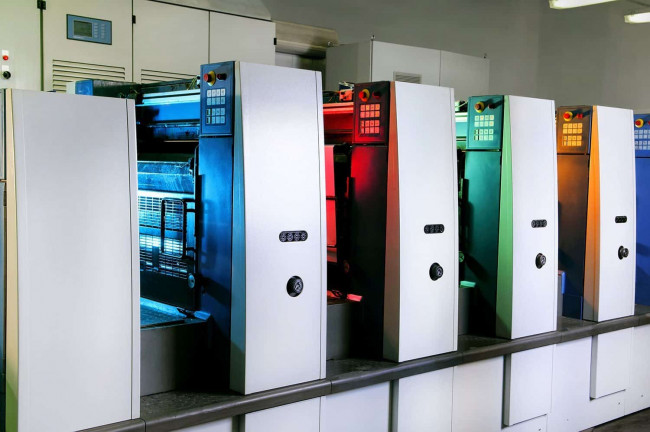In the ever-evolving world of printing, offset printing stands out as a cornerstone of the industry. With its versatility, cost-effectiveness, and high-quality results, offset printing has remained a popular choice for a wide range of printing projects. In this comprehensive guide, we delve deep into the art of offset printing, exploring its history, technology, applications, and advantages, providing insights into why it continues to be a preferred printing method for businesses around the world.
Offset Printing:

Offset printing, also known as lithography, is a widely used printing technique that involves transferring ink from a plate to a rubber blanket, and then onto the printing surface. This indirect printing process allows for consistent, high-quality results, making it suitable for various applications, from newspapers and magazines to brochures and packaging materials.
The Offset Printing Process:
Prepress Preparation:
The offset printing process begins with prepress preparation, where the artwork is prepared for printing. This includes creating printing plates, adjusting colors, and optimizing the print design.
Plate Making:
In offset printing, the image to be printed is transferred onto metal plates using a photosensitive chemical process. Each color requires a separate plate, typically made of aluminum or polyester.
Printing Setup:
The printing plates are mounted onto the printing press, and the press is set up with the appropriate ink colors and paper stock. The press operator adjusts the ink density, registration, and other settings to ensure optimal print quality.
Ink Transfer:
As the printing press runs, ink is transferred from the plates to a rubber blanket cylinder, which then transfers the ink onto the paper or other printing substrate. The offset printing process relies on the principle of repulsion between ink and water to create clean, sharp images.
Finishing:
Once the printing is complete, the printed sheets may undergo finishing processes such as trimming, folding, binding, or coating, depending on the specific requirements of the project.
Advantages of Offset Printing:
High-Quality Results:
Offset printing delivers crisp, high-resolution images with vibrant colors and fine detail, making it ideal for projects that require superior print quality.
Cost-Effectiveness:
For large print runs, offset printing offers significant cost savings compared to digital printing, thanks to lower per-unit costs and efficient production processes.
Versatility:
Offset printing can be used to print on a wide range of substrates, including paper, cardboard, plastic, and metal, making it suitable for diverse applications such as packaging, marketing materials, and publications.
Consistency:
Offset printing produces consistent results from the first print to the last, ensuring uniform color reproduction and image quality throughout the print run.
Compatibility with Special Finishes:
Offset printing can accommodate special finishes such as spot varnish, embossing, and foil stamping, allowing for enhanced visual impact and tactile appeal.
Applications of Offset Printing:
Publishing:
Offset printing is widely used in the publishing industry for printing books, magazines, newspapers, and other periodicals. Its ability to produce large quantities of high-quality prints efficiently makes it a preferred choice for publishers.
Marketing Collateral:
Offset printing is commonly used to produce marketing collateral such as brochures, flyers, posters, and direct mail pieces. Its versatility and cost-effectiveness make it well-suited for large-scale marketing campaigns.
Packaging:
Offset printing is utilized in the packaging industry for printing product packaging, labels, and folding cartons. Its ability to print on various substrates and accommodate special finishes makes it ideal for creating eye-catching packaging designs.
Corporate Stationery:
Offset printing is often used to produce corporate stationery items such as letterheads, business cards, envelopes, and presentation folders. Its ability to reproduce intricate designs and logos accurately makes it a popular choice for businesses seeking professional branding materials.
The Impact of Offset Printing in the UAE:
Offset printing plays a vital role in the UAE's vibrant and dynamic printing industry, serving as the backbone of commercial printing operations across the region. Its precision, reliability, and ability to deliver high-quality results have made it indispensable for businesses, government agencies, and creative professionals alike.
Corporate Branding and Marketing:
In the competitive business landscape of the UAE, effective branding and marketing are essential for success. Offset printing enables businesses to create visually striking and professionally printed materials that enhance their brand image and engage their target audience.
From corporate stationery and marketing collateral to promotional materials and product packaging, offset printing allows businesses to make a lasting impression and stand out from the crowd.
Publishing and Media:
The publishing industry in the UAE relies heavily on offset printing for the production of books, magazines, newspapers, and other printed materials.
Offset printing's ability to reproduce intricate details and vibrant colors accurately makes it ideal for large-volume printing projects, ensuring cost-effective production without compromising on quality.
Creative Expression and Design:
Offset printing serves as a canvas for creative expression and design, allowing artists, designers, and photographers to bring their visions to life with precision and clarity.
Whether it's creating art prints, exhibition catalogs, or high-end marketing materials, offset printing offers unmatched color fidelity and detail, transforming concepts into tangible works of art.
Frequently Asked Questions (FAQs):
What is the difference between offset printing and digital printing?
Offset printing involves transferring ink from a plate to a rubber blanket and then onto the printing surface, making it ideal for large print runs and projects that require superior print quality. Digital printing, on the other hand, involves directly printing digital files onto the printing substrate, making it suitable for short print runs and projects that require quick turnaround times.
How long does it take to set up an offset printing press?
The setup time for an offset printing press depends on various factors, including the complexity of the print job, the size of the press, and the expertise of the press operator. Generally, setup times can range from a few hours to a full day for more complex projects.
Can offset printing accommodate custom colors and special finishes?
Yes, offset printing can accommodate custom colors and special finishes such as spot varnish, embossing, and foil stamping. These special finishes can enhance the visual appeal and tactile quality of printed materials, adding a touch of elegance and sophistication.
What is the minimum quantity required for an offset printing job?
The minimum quantity required for an offset printing job depends on various factors, including the size of the press, the complexity of the print job, and the cost considerations. Generally, offset printing is most cost-effective for large print runs, typically starting from a few hundred to several thousand copies.
Conclusion:
Offset printing remains a cornerstone of the printing industry, offering unparalleled quality, versatility, and cost-effectiveness for a wide range of printing projects. From publishing and marketing collateral to packaging and corporate stationery, offset printing continues to be a preferred choice for businesses seeking superior print quality and visual impact. As technology continues to evolve, offset printing remains a timeless and indispensable tool for bringing ideas to life on paper.











